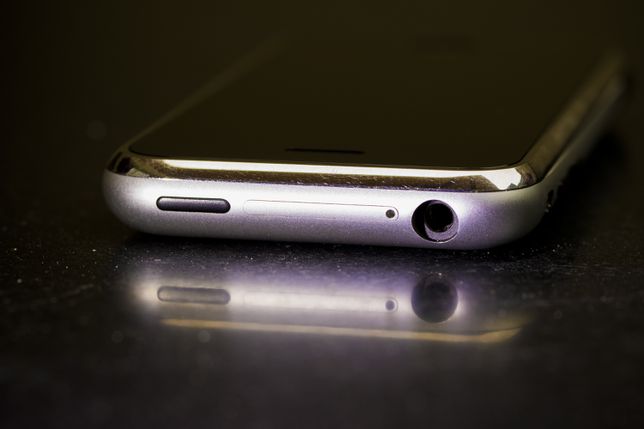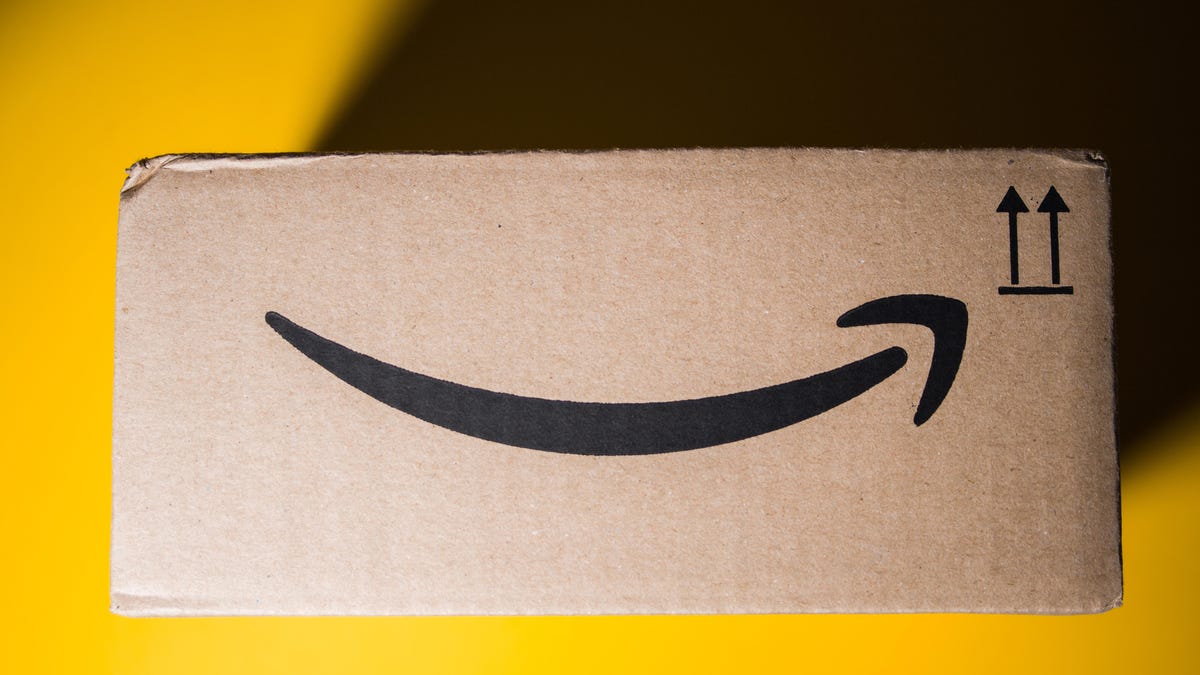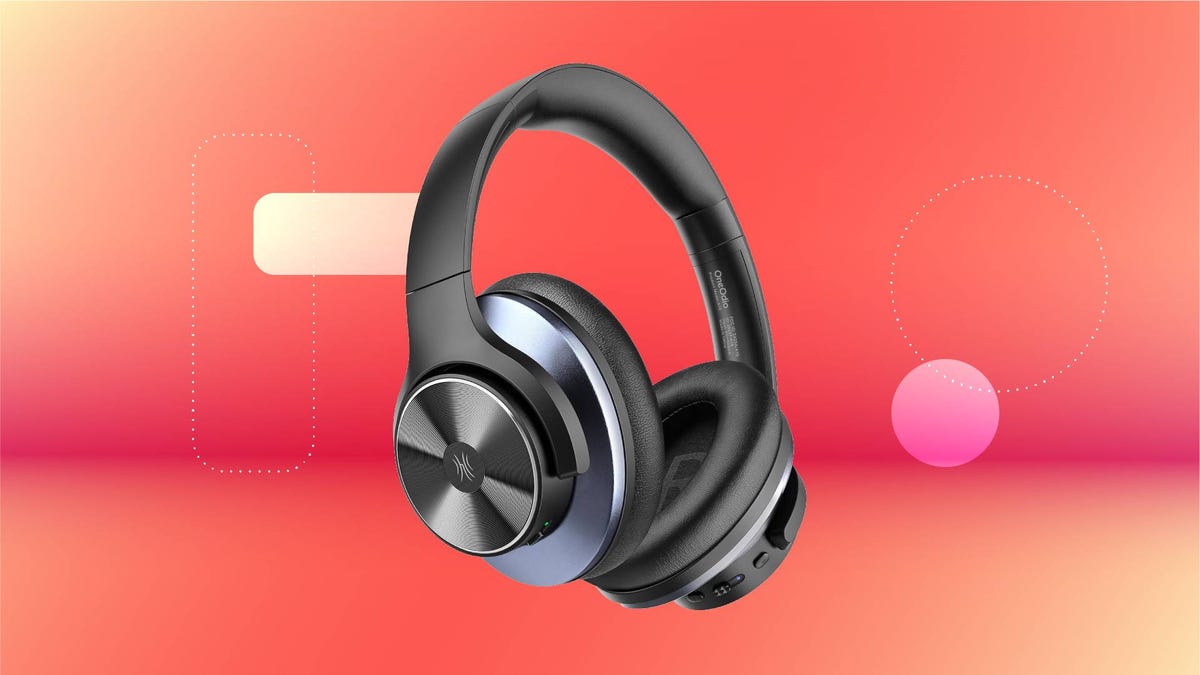Technologies
10 ways Apple’s iPhone changed everything
The world is a different place 15 years after Apple introduced its popular smartphone — in both good and bad ways.

Editors’ note: This story was originally published on Jan. 7, 2017.
In 2007, Nokia was the world’s largest phone maker. Microsoft was gearing up to launch Windows Vista. And the best new products at CES included a wireless TV and an MP3 player that streamed internet radio.
Then, on Jan. 9, 2007, Apple CEO Steve Jobs unveiled a device that went on to change the world: a $499 iPhone that came with 4GB of storage. It was a mobile phone, a music player and an Internet device. It went on sale about six months later, on June 29, 2007.
«iPhone is a revolutionary and magical product that is literally five years ahead of any other mobile phone,» Jobs said at the time.
Since then, Apple has sold more than 1.2 billion iPhones and has become the most profitable public company in the world. Copycat phones from companies like Samsung, HTC, Motorola and Xiaomi proliferated across the globe, and now even people in places without steady electricity have smartphones.
«It’s difficult to understate [the iPhone’s] impact,» Reticle Research analyst Ross Rubin said. «The ripples it has created affect wide swaths of our lives.»
Here are some ways the iPhone has changed the way we live:
1. We’re always on
It used to be you’d fire up your computer, wait for your Wi-Fi to connect (or your dialup connection, if we’re going wayyy back) and open Internet Explorer, Safari or some other web browser. Now you’re connected to the internet all the time. If you’re not on Wi-Fi, you’re linked through your cellular network.
It’s not just inescapable connectivity that the iPhone helped bring about. It’s also how we actually access the internet. The iPhone made mobile web browsing useful for the first time. Every other mobile web browser before that was painful, in the words of CNET’s Kent German. Soon came a flood of apps, which removed the need to open a web browser at all.
2. Tablets, watches and headphones, oh my
Multiple devices are either tied to the iPhone or exist because the phone was created. There’s the iPad, essentially a larger iPhone you use at home. And there’s the Apple Watch, which is tethered to the iPhone.
Then there are all the accessories spurred by the popularity of the iPhone, like phone cases; Bluetooth speakers and headphones; and charging docks. ABI Research estimates that revenue in the global mobile accessories market will top $110 billion in 2021.
«Given users’ attachment to their smartphones and their wants and needs to personalize and protect them, the aftermarket mobile accessories market is showing no signs of slowing down,» ABI analyst Marina Lu said.
3. The key to appiness
You may not remember this now, but Apple’s first iPhone didn’t have such a thing as third-party apps or the App Store. That changed in July 2008, when Apple introduced the iPhone 3G and its iPhone 2.0 software.
The App Store is what made the iPhone a must-have device. There are now more than 2 million apps in the App Store, with essentially every company making one or more apps. And the iPhone and App Store have spawned industries that couldn’t exist without smartphones. There’d be no Uber or Lyft to shuttle us from place to place, for instance, or Instagram or Snapchat for sharing our photos.
4. Everyone’s a shutterbug
Sure, we had cameras on our phones before the iPhone. But the Apple gadget’s combination of easy internet access and apps like Instagram inspired people’s inner photographer.
As a result, lugging around an actual camera became redundant.
«We as a species take more pictures than we ever had in the past by an order of magnitude,» Current Analysis analyst Avi Greengart said.
5. Livin’ live
The phone’s camera also means you have a portable camcorder (remember those?) at your fingertips. And on top of that, the phone’s connection lets you broadcast video immediately. That could mean talking to your family members on the other side of the country or shooting a cat video for YouTube. Or, thanks to services like Facebook Live and similar features on other social networks, the technology can be used for filming police brutality or instantly reporting something you’ve seen.
On the flip side, having these smart devices on us at all times lets law enforcement and corporations (like the makers of those apps on your phone) track us. Apple has taken a strong stance on privacy, but security remains a big concern for users.
6. Putting the digits in digital
Touchscreens once were rare. Now babies are swiping at TVs and wondering why the screen doesn’t change. Interactive screens are in virtually everything, even refrigerators. When Jobs introduced the iPhone, he said, «We are all born with the ultimate pointing device — our fingers — and iPhone uses them to create the most revolutionary user interface since the mouse.»
He was more right than he could imagine. The appeal of a touchscreen phone forced Microsoft to embrace touch in its software and get its hardware partners to make touchscreen phones, tablets and computers.
It’s almost surprising to see a device today without a touchscreen (though Apple maintains it won’t be putting touchscreens in its Mac computers).
7. You are here
The introduction of mapping on the iPhone meant you no longer had to feel like an embarrassed tourist in a new city, clutching a giant paper map on the street corner. Google Maps and Apple Maps are two of the most-used apps on the iPhone, and they’ve steadily added features over the years, like public transit and biking directions.
8. Gaming goes to the next level
The iPhone reinvented the idea of mobile gaming. Apps like Angry Birds, that anyone could play using their fingers on the touchscreen, became hugely popular, and payment models changed. Many games are now free to play — instead of charging a sales price, developers came up with the idea of in-app purchases, which let you pay for new levels and features as you go.
Mobile-oriented gaming subscriptions have also gained steam, with Apple’s Arcade service and Google’s Play Pass both highlighting access to ad-free games on iOS and Android, respectively. Even more companies plan to use cloud services to stream games to mobile, with growing efforts from Microsoft’s Xbox Game Pass, Nvidia’s GeForce Now and Google’s Stadia.
9. Cash ain’t king
Apple wasn’t the first company to talk about mobile payments, but it did make even your grandma aware of the technology, which lets you use your phone to purchase things. Goodbye, cash. Hello, iPhone. The iPhone’s Wallet app also can store retail coupons, reward cards, and passes for flights and movies, all in one place. Even your driver’s license is getting ready to be in Apple’s Wallet if you want it to be.
Cash isn’t dead yet — there still are many places that don’t take mobile payments — but using your phone at the checkout stand is more common than ever.
10. But wait — there’s more
There’s no way to sum up in just 10 points all that the iPhone did. So here’s a grab bag of additional stuff.
Apple basically killed Adobe Flash on mobile devices and made endless scrolling a very good thing. You never have to carry a calculator or flashlight anymore, and visual voicemail lets you easily skip forward in a meandering message. Podcasts mean you don’t have to listen to the radio in real time — and have become a competitive space where Spotify, Stitcher and more wrangle exclusive deals for popular shows.
Social media has also shifted heavily to mobile devices from desktop computers, letting people feel connected to friends at all times.
At the same time, the iPhone has been linked to the rise in attention-deficit/hyperactivity disorder and short attention spans in kids. Governments use mobile devices to spy on their citizens, and consumers give up a lot of personal information in exchange for services like Uber rides.
But even with the negatives, don’t try to take someone’s iPhone away.
Please leave some of your thoughts in the comments section on how the iPhone has changed the way you live.
Technologies
Amazon Prime’s $2.5 FTC Settlement: Learn Who’s Eligible and How Much Payouts Will Be
The online retail giant will soon begin paying misled customers who subscribed to Amazon Prime.

If you thought your Amazon Prime signup process was a little confusing, it’s not just you. The Federal Trade Commission filed a lawsuit against Amazon in 2023, alleging that the retail giant misled customers in marketing Prime subscriptions to its customers. In September, Amazon agreed to pay a $2.5 billion settlement, one of the largest in US history.
The FTC said $1.5 billion will go into a fund to repay eligible subscribers, with the remaining $1 billion collected as a civil penalty. And while Amazon did not admit to wrongdoing, it’s still making changes to how it presents the service. The settlement requires Amazon to add a «clear and conspicuous» option to decline Prime during checkout and to simplify the cancellation process.
«Amazon and our executives have always followed the law, and this settlement allows us to move forward and focus on innovating for customers,» Mark Blafkin, Amazon senior manager, said in a statement. «We work incredibly hard to make it clear and simple for customers to both sign up or cancel their Prime membership, and to offer substantial value for our many millions of loyal Prime members around the world.»
Don’t miss any of our unbiased tech content and lab-based reviews. Add CNET as a preferred Google source.
Why did the FTC file a lawsuit against Amazon?
The FTC filed suit against Amazon accused the company of using «dark patterns» to nudge people into Prime subscriptions and then making it too hard to cancel. The FTC maintained Amazon was in violation of Section 5 of the FTC Act and the Restore Online Shoppers’ Confidence Act.
«Specifically, Amazon used manipulative, coercive or deceptive user-interface designs known as ‘dark patterns’ to trick consumers into enrolling in automatically renewing Prime subscriptions,» the FTC complaint states.
Who’s eligible for Amazon’s payout?
Amazon’s legal settlement is limited to customers who enrolled in Amazon Prime between June 23, 2019, and June 23, 2025. It’s also restricted to customers who subscribed to Prime using a «challenged enrollment flow» or who enrolled in Prime through any method but were unsuccessful in canceling their memberships.
The FTC called out specific enrollment pages, including Prime Video enrollment, the Universal Prime Decision page, the Shipping Option Select page and the Single Page Checkout. To qualify for a payout, claimants must also not have used more than 10 Amazon Prime benefits in any 12-month period.
Customers who signed up via those challenged processes and did not use more than three Prime benefits within one year will be paid automatically by Amazon within 90 days. Other eligible Amazon customers will need to file a claim, and Amazon is required to send notices to those people within 30 days of making its automatic payments.
Customers who did not use a challenged sign-up process but instead were unable to cancel their memberships will also need to file claims for payment.
How big will the Amazon payments be?
Payouts to eligible Amazon claimants will be limited to a maximum of $51. That amount could be reduced depending on the number of Amazon Prime benefits you used while subscribed to the service. Those benefits include free two-day shipping, watching shows or movies on Prime Video or Whole Foods grocery discounts.
Customers who qualify for the payments should receive them by Dec. 24.Customers outside the US aren’t eligible for the payout.
Technologies
These Already Affordable ANC OneOdio Headphones Are Even Better at $26 Off
They’re one of our favorite noise-canceling pairs for less than $100, and you can snag some for a record-low $64 right now.

Though you could easily drop $300 or even more, you don’t need to spend a fortune to get yourself a decent pair of headphones these days. There are some excellent budget-friendly options out there that still have plenty to offer, and right now you can snag one of our favorite pairs of 2025 for even less. Amazon has knocked $26 off the OneOdio A10s, which brings them down to a record-low $64. Though this deal could expire at any time, so be sure to get your order in soon.
These over-ear OneOdio headphones earned a spot on our list of the best noise-canceling pairs under $100 thanks to their sturdy design and superior comfort. According to CNET audio expert David Carnoy, they also «sound surprisingly decent and have reasonably good noise canceling with a transparency mode.» Plus, they boast an impressive 50-hour battery life and have a 3.5mm aux port for wired listening as well.
Don’t miss any of our unbiased tech content and lab-based reviews. Add CNET as a preferred Google source.
HEADPHONE DEALS OF THE WEEK
-
$300 (save $51)
-
$299 (save $151)
-
$220 (save $180)
Why this deal matters
Having earned a spot on our list of the best budget noise-canceling headphones, the OneOdio A10s are already a decent value at full price. So a chance to grab a pair on sale — let alone for a record-low price — is a serious bargain. They have a sturdy design, impressive sound and decent noise-canceling capabilities, which is a solid set of features for less than $70.
Though there are plenty of other excellent headphone deals available now, if you’re on the hunt for a different pair.
Join Our Daily Deals Text Group!
Get hand-picked deals from CNET shopping experts straight to your phone.
By signing up, you confirm you are 16+ and agree to receive recurring marketing messages at the phone number provided. Consent is not a condition of purchase. Reply STOP to unsubscribe. Msg & data rates may apply. View our Privacy Policy and Terms of Use.
Technologies
How President Jimmy Carter Slayed a Dragon and Is Helping to Eradicate an Ancient Disease
President Jimmy Carter, the Carter Center and LifeStraw have waged a war against Guinea Worm disease since 1986. We’re now closer than ever to completely eradicating an ancient disease from the planet.
Maybe you’ve used a LifeStraw to safely drink water from a stream while camping, or maybe you have one in your home to filter your drinking water. But did you know that the company behind this popular water filtration technology is close to completely eradicating an ancient disease from the planet?
For thousands of years, Guinea Worm or Dracunculiasis has plagued the continents of Africa and Asia, debilitating its victims and causing incredible pain and suffering. The disease stems from bad drinking water that contains Guinea Worm larvae, which for generations has been unwittingly ingested by humans. Once the Guinea Worm reaches maturity inside its host, the tapeworm bores its way out of the body, usually through the lower extremities. It’s a process that causes incredible pain and discomfort.
The battle against Guinea Worm is the focus of a new documentary by The Carter Center and Buffalo 8. The President and the Dragon — now playing on Amazon Prime Video, Hoopla and Verizon Fios — illustrates the struggles faced by President Jimmy Carter and the Carter Center in their fight to eradicate Guinea Worm. Carter ran a campaign in motion that used education, technology, surveillance, and a coalition of scientists and volunteers. The goal was to decrease the number of cases of Guinea Worm from 3.5 million victims a year in the 1990s to just 15 cases in 2024.
If the Guinea Worm Eradication program is successful, Guinea Worm will be the second disease ever eradicated from planet Earth. Smallpox, the first, was declared eradicated by the World Health Organization in 1980. What’s even more remarkable about this accomplishment is that the disease would be eradicated without the use of a vaccine or medicine.
I traveled to The Carter Center in Atlanta for a screening of Carter’s new documentary. I also interviewed Allison Hill, LifeStraw CEO, and Adam Weiss, the director of the Guinea Worm Eradication Program, about their work to eradicate the disease. You can watch the video to learn more about the documentary and the fight against Guinea Worm. Watch the trailer for The President and the Dragon below.
-

 Technologies3 года ago
Technologies3 года agoTech Companies Need to Be Held Accountable for Security, Experts Say
-

 Technologies3 года ago
Technologies3 года agoBest Handheld Game Console in 2023
-

 Technologies3 года ago
Technologies3 года agoTighten Up Your VR Game With the Best Head Straps for Quest 2
-

 Technologies4 года ago
Technologies4 года agoVerum, Wickr and Threema: next generation secured messengers
-

 Technologies4 года ago
Technologies4 года agoBlack Friday 2021: The best deals on TVs, headphones, kitchenware, and more
-

 Technologies4 года ago
Technologies4 года agoGoogle to require vaccinations as Silicon Valley rethinks return-to-office policies
-

 Technologies4 года ago
Technologies4 года agoOlivia Harlan Dekker for Verum Messenger
-

 Technologies4 года ago
Technologies4 года agoiPhone 13 event: How to watch Apple’s big announcement tomorrow
